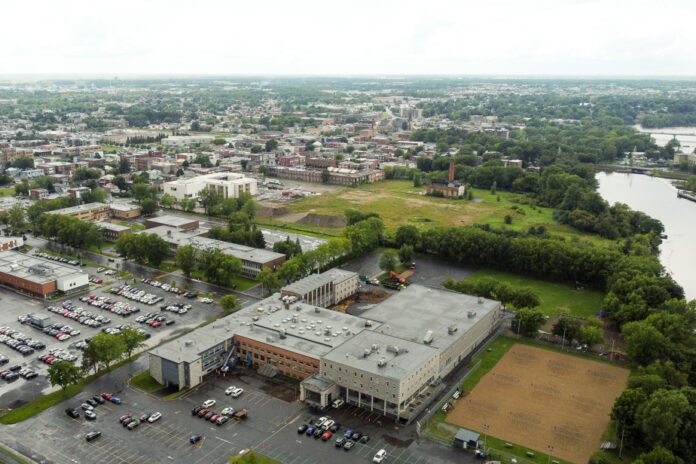La Presse informed us this week that following the 2021 census, the Drummondville region had become, thanks to a population of more than 100,000 inhabitants, the sixth census metropolitan area (CMA) in Quebec recognized by Statistics Canada.
This is an event that deserves to be highlighted due, on the one hand, to the fact that the last recognized Quebec CMA would be that of Sherbrooke in 1986 and, on the other hand, considering the path traveled by the city and region in terms of development in recent decades. However, is it fair to speak of a “revenge” or a “miracle” of Drummondville?
Unless Drummondville holds a grudge, it’s been a long time since the territory no longer embodies “the quintessence of deep Quebec”, to use the words of former economic columnist at La Presse Claude Picher. The latter published in June 1995 (28 years ago!) a text aptly titled “The Revenge of Drummondville”.
“For thousands of Quebecers, Drummondville is a hole of infinite monotony, as backward culturally as it is economically. The impression is further heightened by the only image that most of us have of the place: a flat stage between Montreal and Quebec, and therefore a banal alignment of restaurants, garages, motels and shopping centers glued to the Trans-Canada Highway . It was enough for the Montrealers, among others, to have fun multiplying the jokes on the backs of the brave Drummondvillois, and they did not hesitate.
” Well ! Montreal friends, fasten your toques, I have some news for you.
“It was in 1989 that specialists in regional economies began to notice an unexpected phenomenon occurring in the Drummondville region: employers were complaining of a labor shortage. In other words, the local economy offered more jobs than there were workers available. […]
“Drummondville has since continued to create jobs by the thousands. In the manufacturing sector alone, more than 6,000 jobs have been created since 1989, including almost 1,400 last year. There has been an average of 200 industrial investments per year for the past six years; these investments total half a billion, and come from Quebec as well as the United States, Germany, France, Japan, Norway, among others. »
Since then, industrial investments and the creation of new jobs have not slowed down. For example, between 1998 and 2007, the number of manufacturing companies in the RCM of Drummond increased from 465 to 689 and an average of $133.6 million was invested annually. Over the past five years (2018-2022), more than $1.2 billion has been invested and nearly 4,400 jobs have been created.
Can we then speak of a miracle to describe the exceptional situation in which the region finds itself today, especially when compared to the state of devitalization that prevailed at the turn of the 1980s?
In its primary sense, a miracle is defined, according to Le Robert, as an “extraordinary event in which one believes one recognizes a benevolent divine intervention, to which one confers a spiritual significance”.
On the basis of a strategy based on the diversification of industrial activities, the establishment of SMEs, the stimulation of local entrepreneurship and the prospecting of foreign companies, Drummondville will go from “city in agony” to “model of development “. In hindsight, we could say that the region was doomed to success. It counted and still counts on a strategic location between Quebec, Montreal, Trois-Rivières and Sherbrooke, not to mention its proximity to the United States. The region could also bet on the many lands available to accommodate new businesses (which is less and less the case). The textile industry, which was the driving force for much of the 20th century and whose competitive advantage is based on low wages, has helped instill a strong entrepreneurial spirit in the region. Indeed, entrepreneurship has emerged as a way for workers to get out of the factory and improve their material living conditions.
Finally, the political and economic leaders, led by the mayor as well as stakeholders from the Drummondville Economic Development Corporation and supported by a tightly knit business community, have been able to work together and in a practically consensual manner to achieve their ends. .
Having first studied the industrial reconversion of Drummondville as part of a doctoral thesis and now working as an actor in economic development in Centre-du-Québec with entrepreneurs and partners in Drummondville, I can affirm that this is not a spirit of revenge, rancor or even a belief in some supernatural force that animates the people of the region. Rather, it is the desire to find solutions to the challenges that affect businesses, the community and the territory so that they continue to be drivers of development. I would even say that the feeling of revenge has given way to pride, even a hint of chauvinism!















